My final design is a Bauhaus table, made out an old school desk. For context I was looking to do an end table for my room as my final project, originally I was going to try a gothic style end table, but the designs I was coming up with weren’t very aesthetically pleasing. During the alternate aesthetics post I considered changing to an industrial or steampunk inspired design made from galvanized steel pipes with a wooden table top. I drew, and CADded out multiple designs and enjoyed them, but when I looked at the price of galvanized steel I realized it was way out of my budget (unless I wanted a very boring table). However, recently for my Component Design class my team needed a cheap plastic chair to put on a kart. I found an old school desk for free on facebook marketplace and so I picked it up. The chair and frame below will be used for component design, but I was unsure of what to do with the rest of the desk. As I looked at the desk the rounded square desktop and pipe legs reminded me of the Bauhaus aesthetic, so I did some research and am going to transform this desk top into a Bauhaus end table.
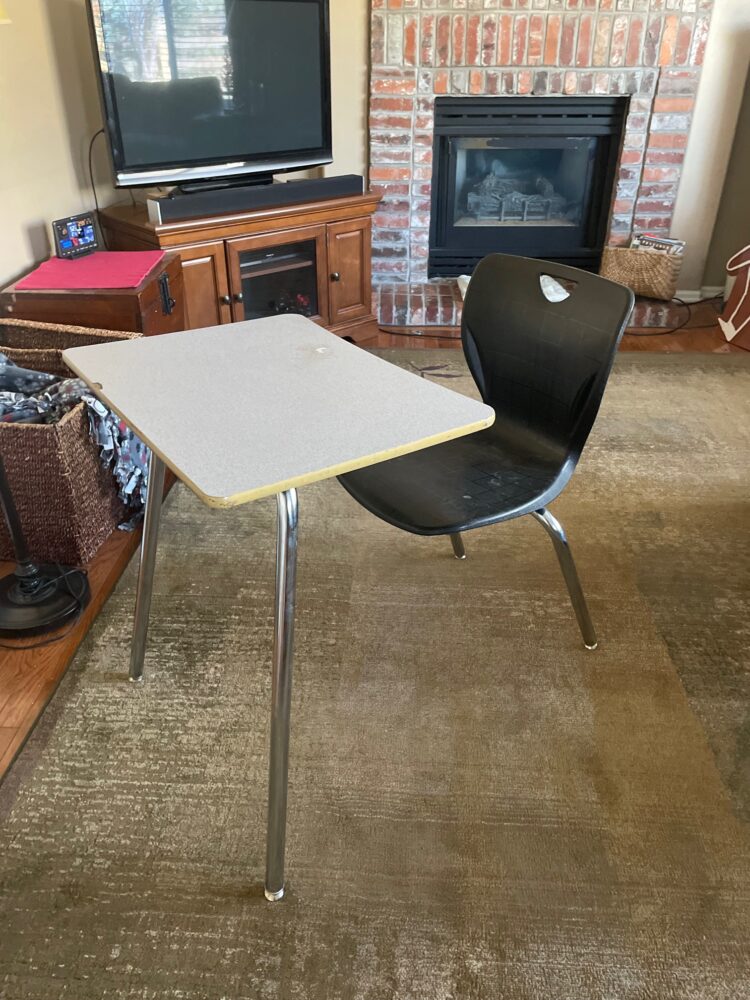
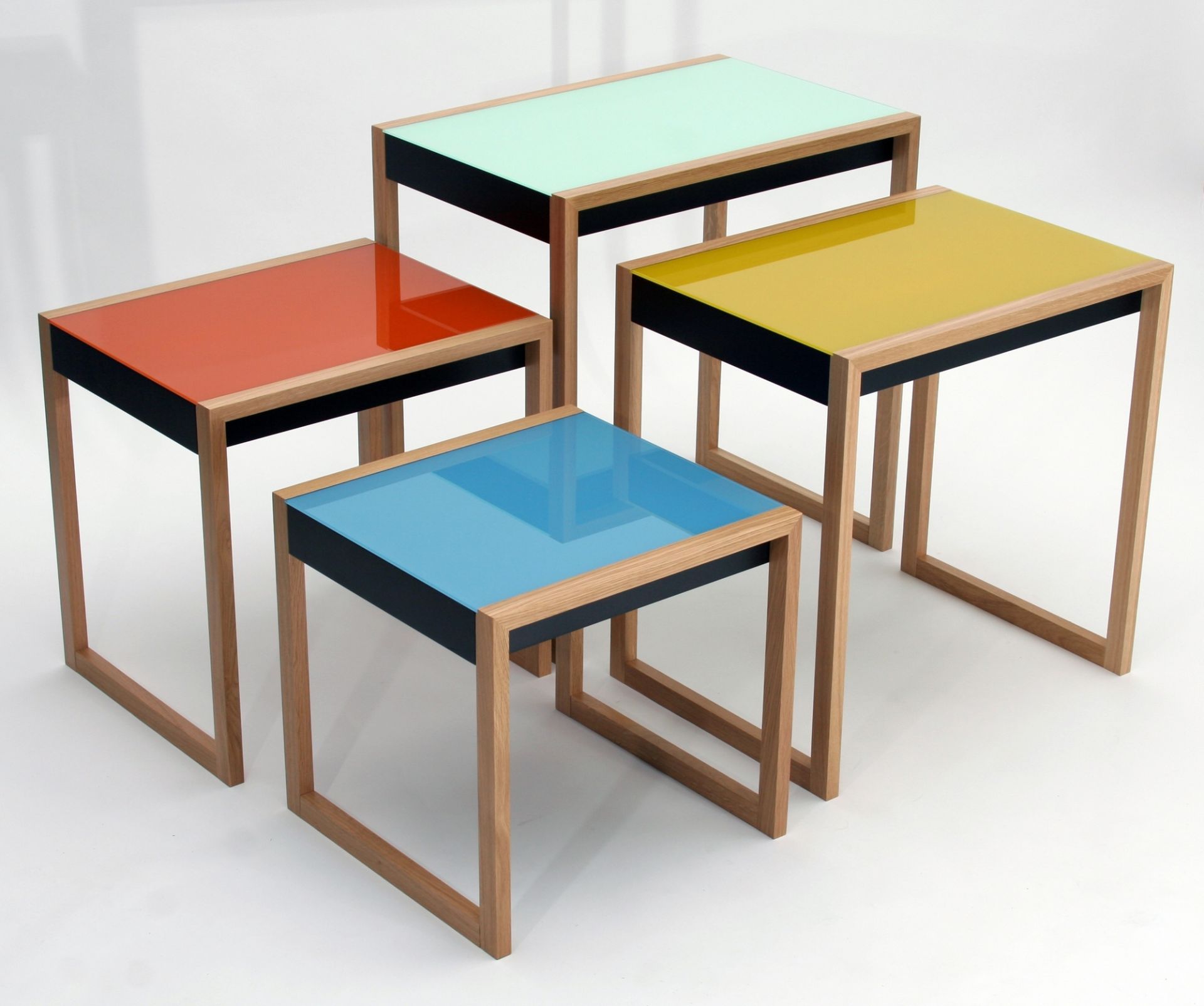
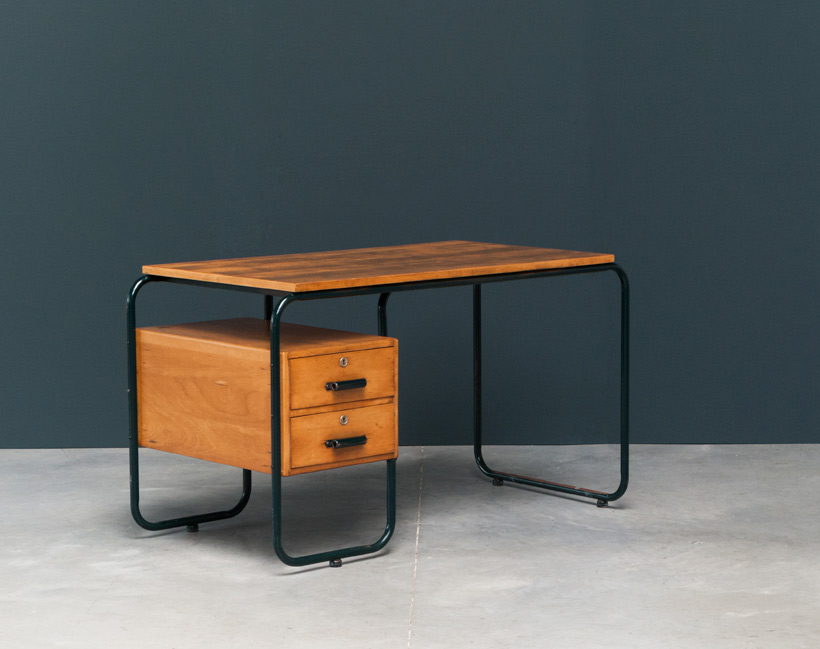
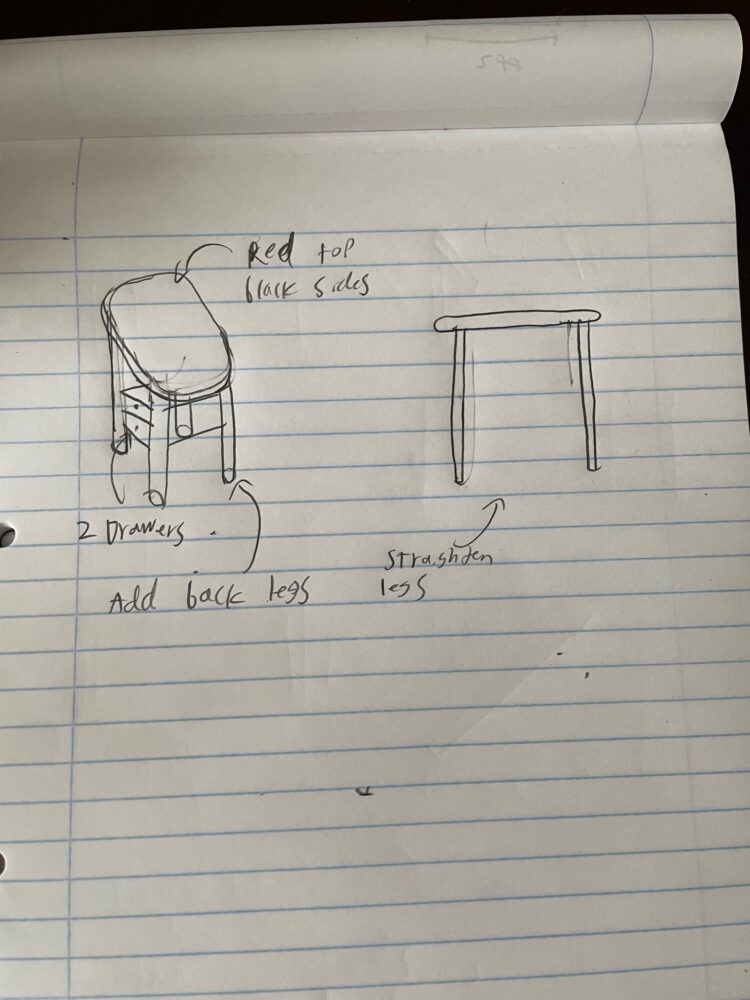
Here is some early phase sketch ideas about what I want the final table to look like. For my dynamic element you can see the hanging drawers, a common style I saw when researching Bauhaus furniture. This week I plan on making a CAD model in addition to more sketches, to better communicate the idea and aesthetic. The three big changes I have to make to the desk top are the colors, adding back legs, and straightening the front legs.
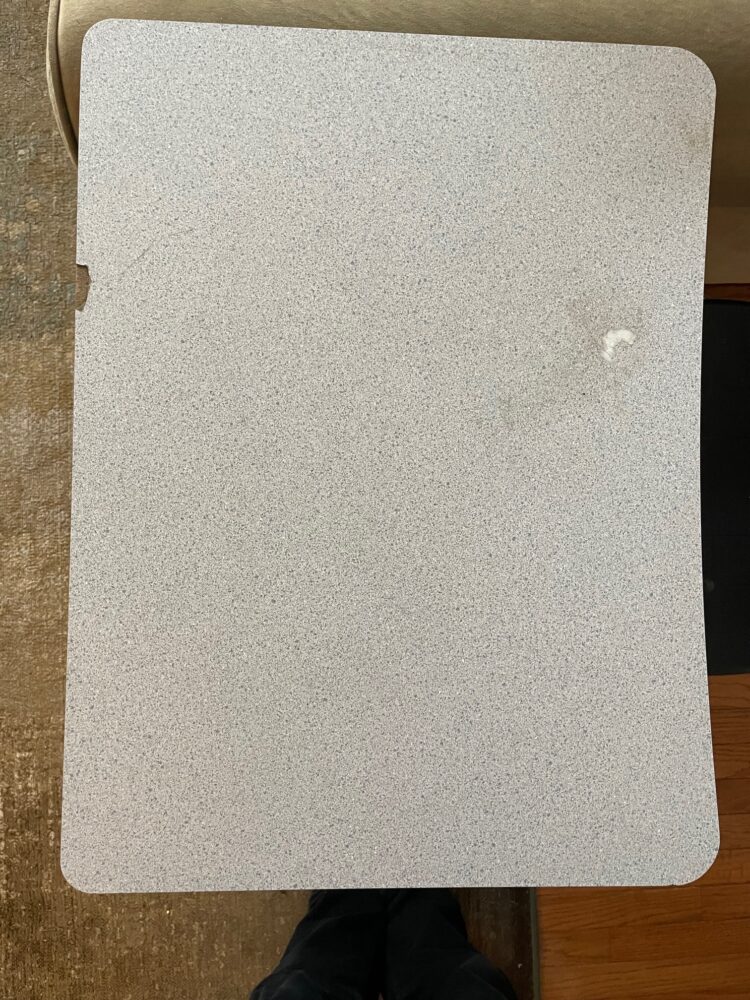
This is the desktop, it’s made out of a particle board with a layer of laminate covering it. There is a chip and a stain on the laminate which take away from the very clean, minimalist Bauhaus look. I would like to replace this laminate layer with either a different piece of wood with a visible grain, and then stain it, or what I would prefer to do is put a layer of paint on the board. I want to try and repair the chip instead of ripping off the layer of laminate because I am afraid of completely tearing it out and ruining the board underneath. I am at a crossroads however, by tearing off the laminate I could potentially ruin the desktop. But if I leave it on and try to paint over, I’m afraid the paint wont stick to the surface well and I won’t end up with the clean look I’m aiming for. I could replace the desktop to a more workable surface, such as a sheet of plywood, however I like the contoured shape and think I can make it fit with the aesthetic, and any addition fabrication takes time away from the other aspects of the table. My current plan with this is going to be try and fix the chip with a wood filler or epoxy, it doesn’t have to be pretty because it will be painted over anyways. Then I am going to remove the desktop, sand it down, prime it, and experiment with how paint will stick to the surface. If it’s really not turning out the way I want then I plan to get a sheet of plywood, probably 3/4″, and create a new desktop with a similar shape out of that.
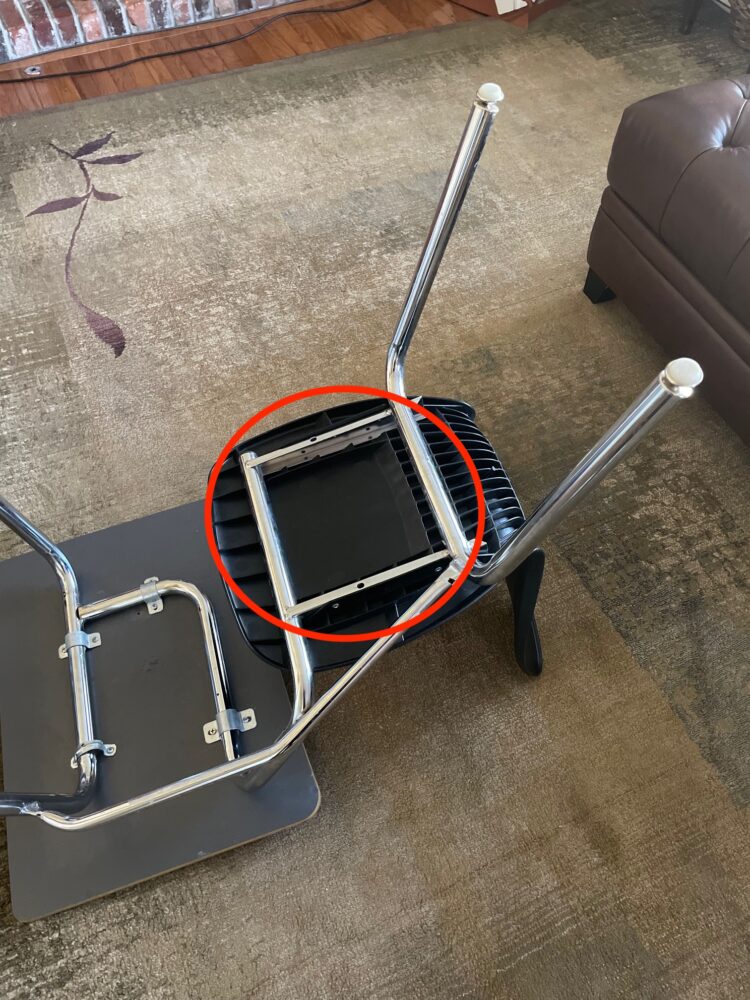
To remove the chair I am planning on cutting both the back legs off, and the main support to the desk, leaving just the square frame underneath the base of the chair. If possible I would like to use these back legs as the back legs to my table, however they are significantly shorter than the front legs. I like the height the desk is currently at, so I would rather extend the back legs than shorten the front ones, but if I cannot find a suitable material to lengthen the back legs I may have to make the table shorter. The legs are about 1.1″ in diameter so finding a similar tube may be a challenge. The desktop sits at 27″ high currently, and the legs are 14″ in the straight sections, and I’ll have about 9″ of the remaining pipe I cut off. If I cannot find a pipe that is an exact match, I may get one a size bigger and weld it over the are I need to extend. That is one area I will also need to fix, when I cut off the supports attached to the front leg it will leave a hole. I plan on taking a piece of steel and welding it over the hole, then sanding down to conceal it. From doing some research most school desks are made of a steel, so I shouldn’t have a problem MIG welding other steel to it.
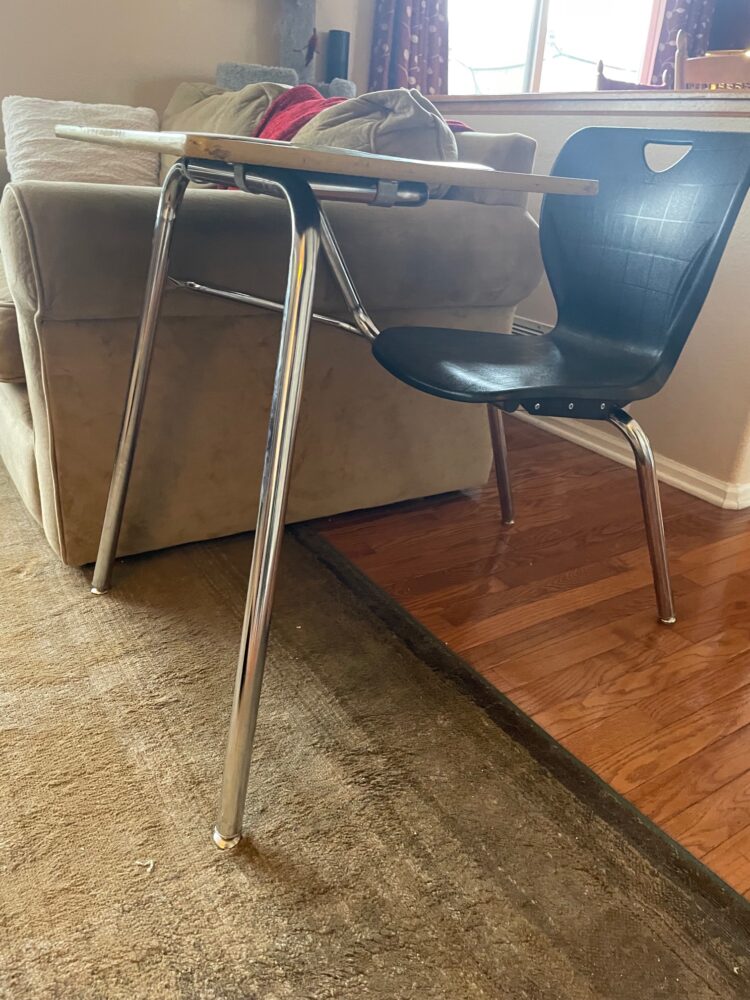
Another thing I’ll have to be aware of is that the desktop is currently on an incline. That works great for it’s function as a desk, but not so much as a tabletop. I should be able to correct this by adding enough material to the back legs that they stand the front legs straight up.
 [2]
[2]
Currently I plan to create a set of drawers similar to the ones shown in this Bauhaus desk above. I am planning on fabricating them out of plywood and painting them with the same color scheme I choose for the tabletop, whether thats a wood grain or paint. Before I finalize dimensions I want to see exactly what the dimensions between the table legs are so that it’s an exact fit. To create this “floating” appearance I want to make the drawers sides slightly larger than the area between the table legs, and then sand a groove into them where I can bend the legs over and they will slide in. Then I will add a hose clamp or some other subtle pipe clamp underneath as supports and the friction between the drawer and the sides will hopefully hold it up. If this doesn’t work they may just have to be close fit drawers attached on the ground. Or I can adjust the mounts on the bottom of the desk and mount the drawers to the underside of the tabletop.
There is still some research and material sourcing I need to do before I can truly start fabrication. By the start of spring break, 3/23 I want to have a full cad model, and list of the exact parts I need. My next step will be disassembly and paint testing the desktop, I expect this to take a couple days, maybe one for the repair and one for the painting. However if this doesn’t work then purchasing, designing, and cutting plywood will probably add 2 or 3 days onto this estimation. The next step will be cutting off the chair and seeing the material I can source from the desk. I do not have much experience cutting metal so I’ll leave 3 days for this. During this time I expect to be ordering materials as well, hopefully getting them all in the week or two after spring break. After spring break I will try to take that week from 3/30-4/6 to finalize the table, and start on the drawers. I will then give the drawer construction one week, and the final assembly 2 days, hopefully ending a few days early with plenty of time for my final reports.
A more concise timeline:
3/13 – 3/23: CAD, final design, ordering materials
3/23 – 3/30: Deconstruction of the desk, repair and paint the tabletop
3/30 – 4/6: Reconstruct the desk into a table, begin drawer construction
4/6 – 4/13: Finish drawer construction
4/13 – 4/15: Final assembly
Some roadblocks I may run across lie in multiple steps of the fabrication. If the current desktop doesn’t work out, then building a new one won’t be difficult, but will take time and energy away from other aspects. Working with the steel legs is the most daunting part of this for me. I’m not too worried about cutting, more about the reassembly. I am planning on MIG welding the back legs together, and while I have done a little bit of MIG welding, I’ve never attempted such a complicated weld. Before spring break I am definitely going by the Idea forge to talk over the process with the guys there and make sure I’m not overlooking anything. Bauhaus has a very clean cut style, so I have to be sure to leave as little trace as possible during the reassembly. The drawer construction may also set me back, I have done plenty of woodworking but have never made drawers before, so I’m sure that unforeseen challenges will appear during that as well, but if I start quickly I’ll have enough time to complete everything well on time.
Images:
[1] Einrichten Design, https://www.einrichten-design.com/en_us/bauhaus-nesting-tables-set-of-4-klein-and-more.html [2] Furniture Love, https://www.furniture-love.com/vintage/furniture/785/bauhaus-tubular-steel-and-wooden-desk.htmlSources:
“Bauhaus.” Wikipedia, Wikimedia Foundation, 11 Mar. 2024, en.wikipedia.org/wiki/Bauhaus.
“Buying Guides.” School Outfitters – Furnishing Great Places to Learn., www.schooloutfitters.com/catalog/gttk_article.php/cPath/CAT202_CAT203#:~:text=Frame%20%E2%80%93%20Most%20all%20desk%20frames,but%20more%20likely%20to%20crack. Accessed 13 Mar. 2024.
“A DIY Guide to Painting Laminate Furniture: Benjamin Moore.” A DIY Guide to Painting Laminate Furniture | Benjamin Moore, www.benjaminmoore.com/en-us/interior-exterior-paints-stains/how-to-advice/interiors/painting-laminate-furniture#:~:text=Can%20you%20paint%20laminate%3F,coffee%20tables%2C%20bookshelves%20and%20dressers. Accessed 13 Mar. 2024.

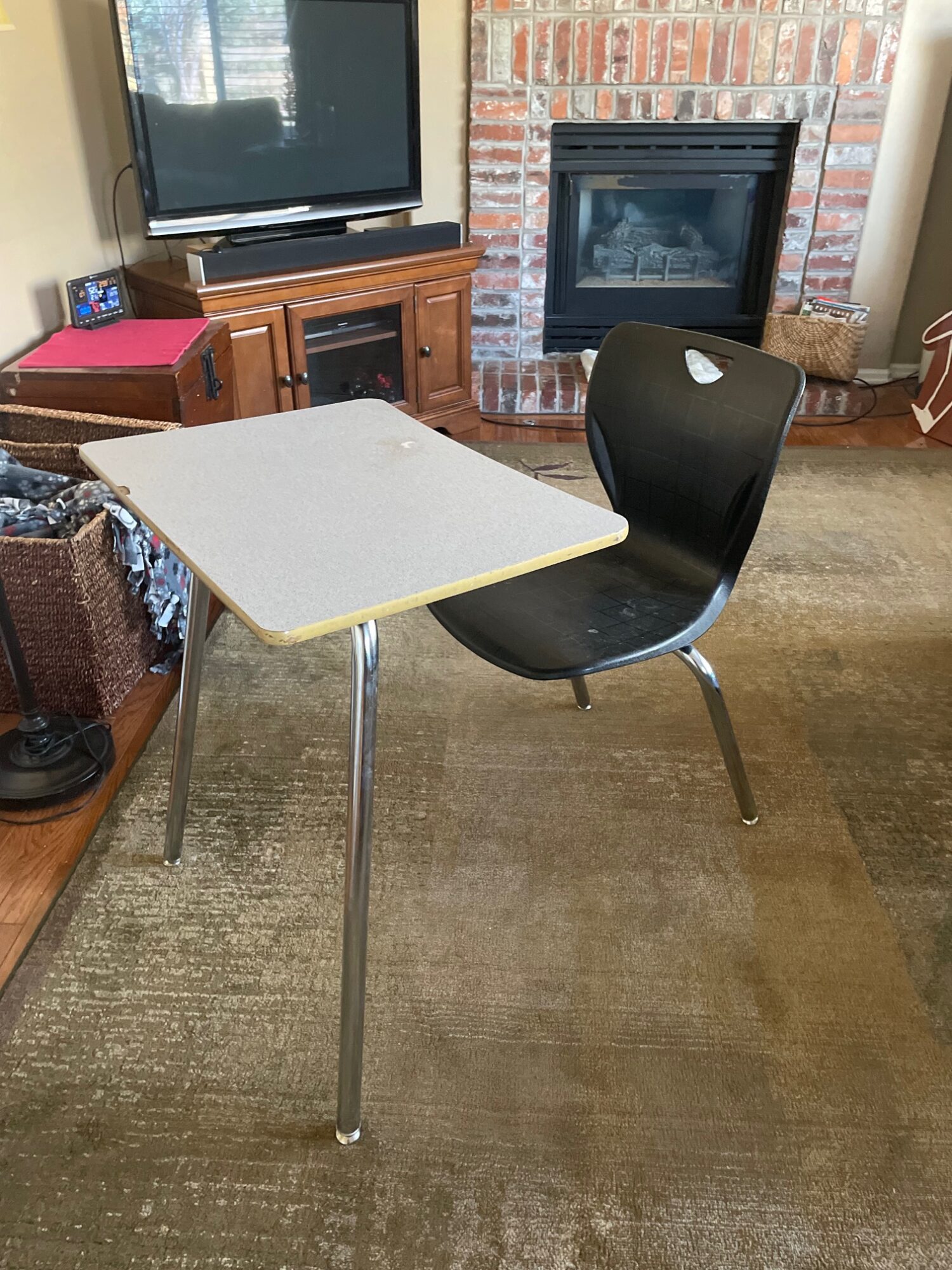
2 Comments. Leave new
Brandon, cool post! I like that your project will be functional and have a clear utility after it is finished. How do you plan on adding material to the rear end so it stays flat like you mentioned? I’m also excited to see your CAD as I geek out about that stuff.
Brandon,
I’ve never heard of the Bauhaus aesthetic before, but your plan looks great! I also love that this project is an upcycle, using the table from your component design chair/desk. Was your welding experience in component design, or elsewhere?